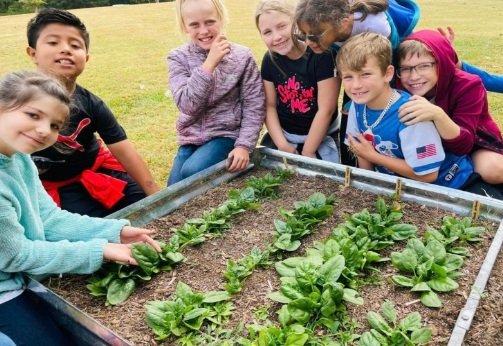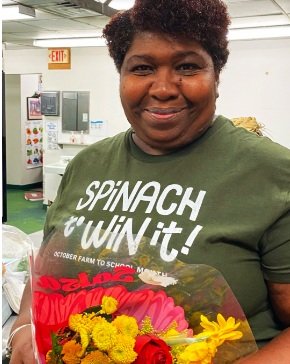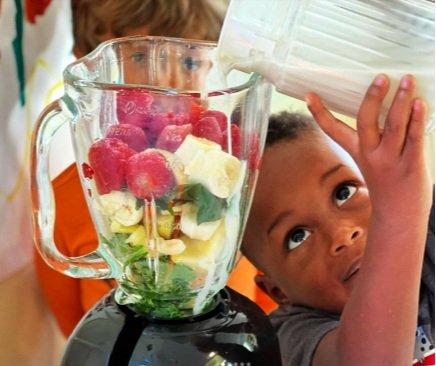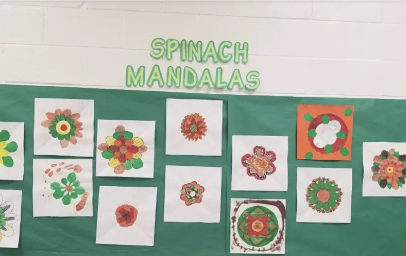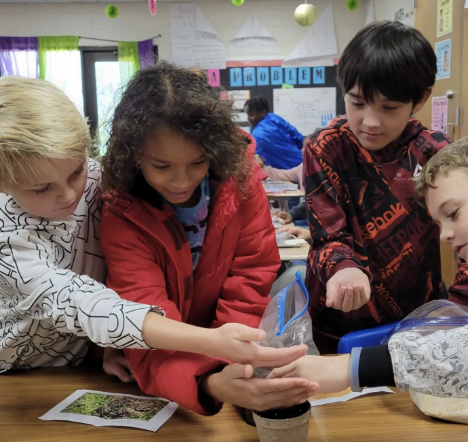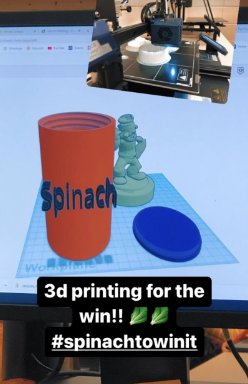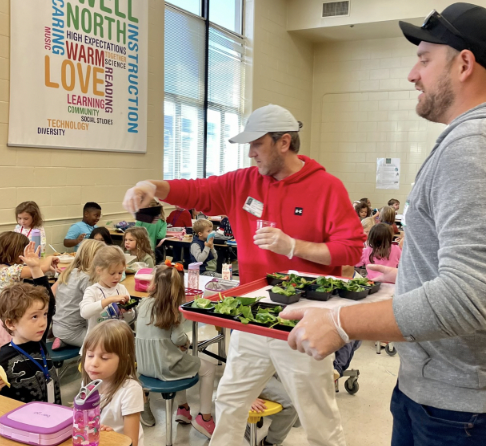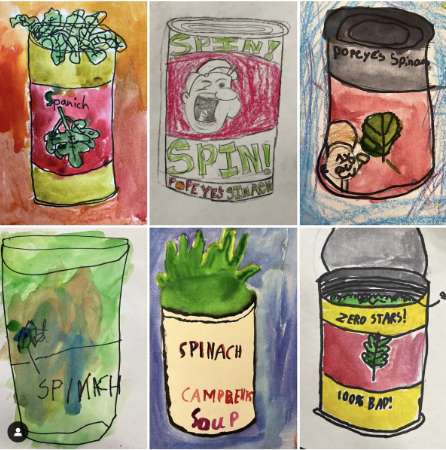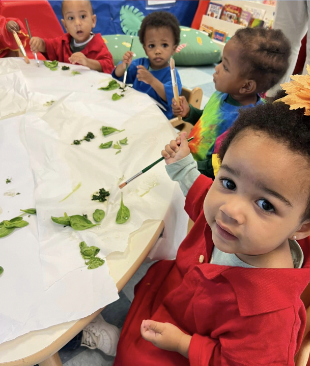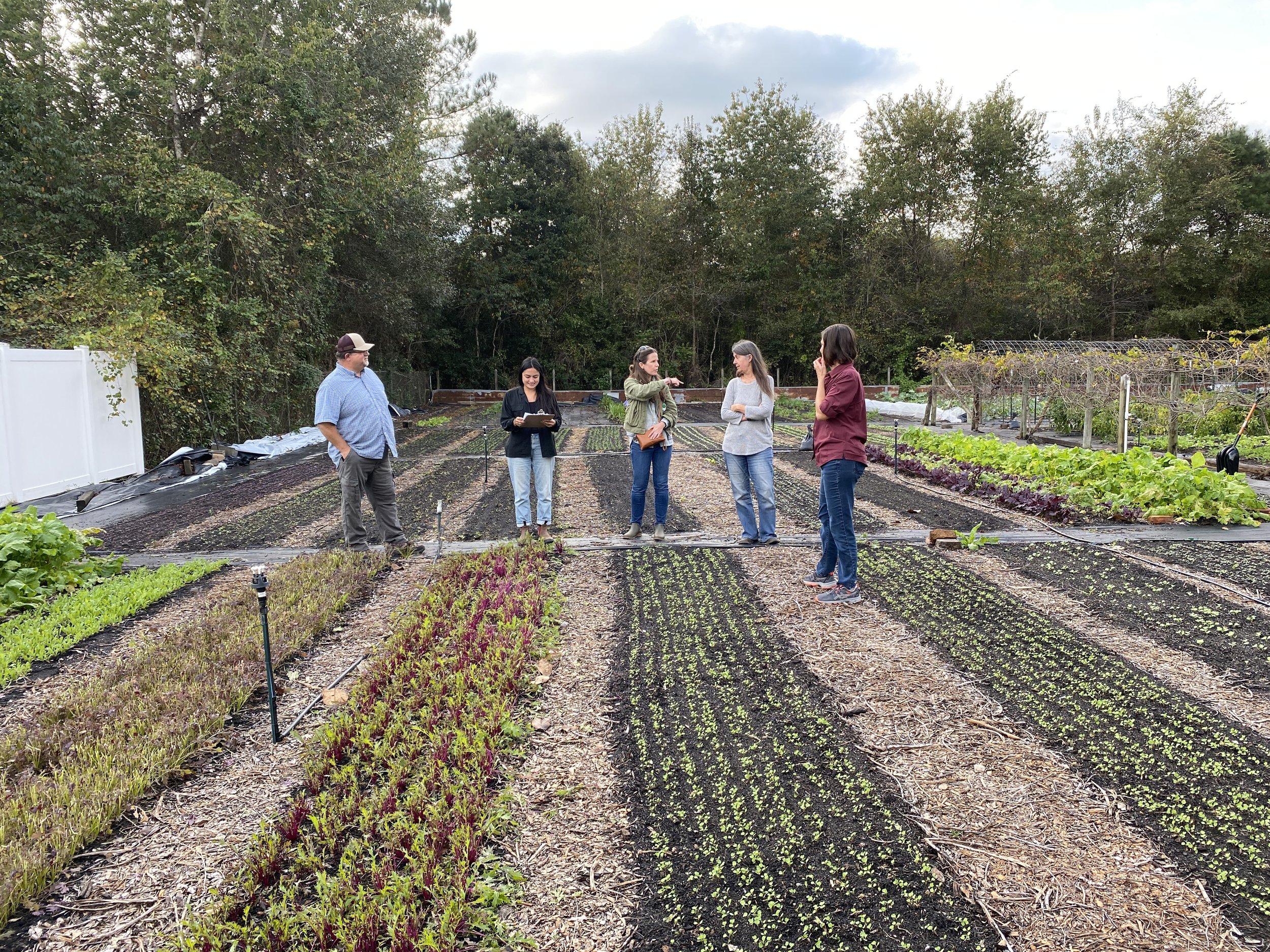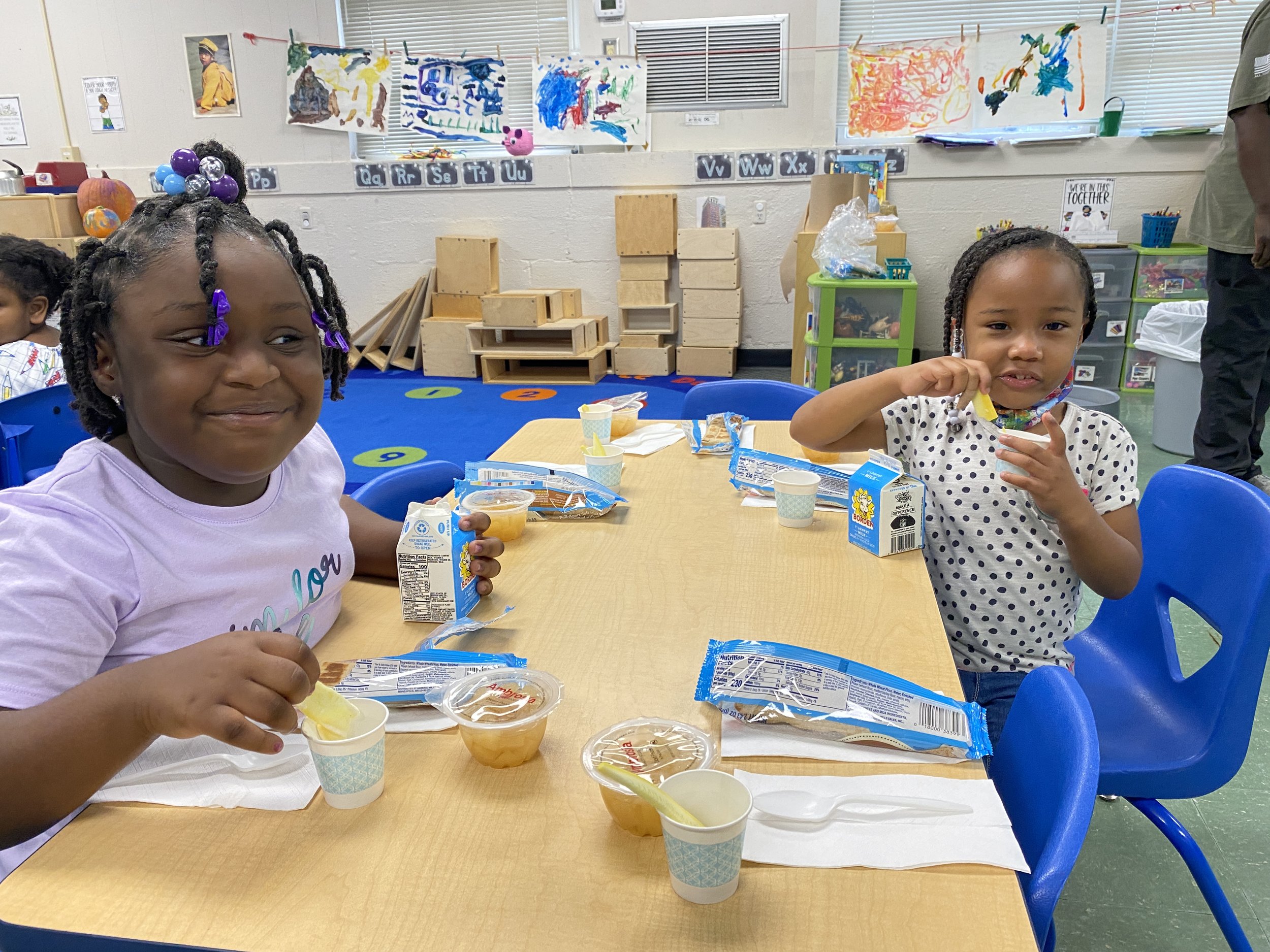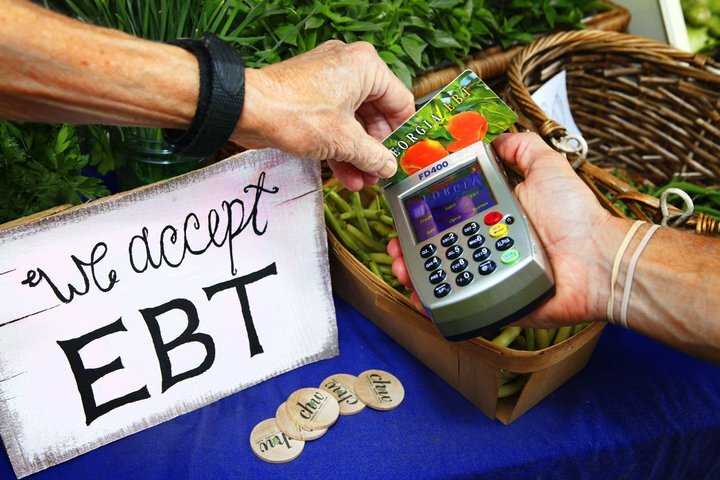Georgia Organics and Forsyth Farmers Market Partner on Strategies to Reduce Childhood Food Insecurity
The Savannah Family Farm Share Partners: (Back row, left to right) Director of Early Childhood Education and Care of Greenbriar Children’s Center Jennifer McMichael, Executive Director of Forsyth Farmers’ Market Dr. Deidre Grim, Food Coordinator of Greenbriar Children’s Center April Mixon, Farm Truck Manager of Forsyth Farmers’ Market Brian Heyward, Community Collaborations Coordinator of Georgia Organics Yaza Sarieh, and Community Collaborations Director of Georgia Organics Kimberly Della Donna .
(Front row, left to right) Director of Community Engagement and Market Manager of Forsyth Farmers’ Market Asia Harold, Community Collaborations Manager of Georgia Organics Kimberly Koogler, Director of Education of Forsyth Farmers’ Market Tasha Wei, and Executive Director of Greenbriar Children’s Center Gena P. Taylor.
SAVANNAH (Aug. 3, 2023) – Georgia Organics and The Forsyth Farmers Market announce the launch of Savannah Family Farm Share, a group style Community Supported Agriculture program designed to address childhood food insecurity for children ages birth to five while developing a new outlet for small scale farmers. The goals of this initiative are to expand opportunities for small scale farmers, increase access to organic and healthy food and educate families about how to prepare and enjoy a weekly bounty of fresh, local food.
Beginning with the Greenbriar Children’s Center, Savannah Family Farm Share hopes to enroll up to 800 members this year, in a low-cost vegetable subscription program specifically designed for families with young children enrolled in Early Care and Education centers.
The Family Farm Share Program is primarily funded by the Atlanta Falcons Youth Foundation and Takeda, though Georgia Organics has raised over $1.5 million to expand the program ten Georgia communities by 2025. The Savannah Family Farm Share program builds on the work of the Waycross Family Farm Share Pilot that began with a Community Transformation Grant of $75,000 from the Georgia Department of Early Care and Learning (DECAL)
The Savannah Family Farm Share program is one of five communities where Georgia Organics is facilitating a local collaborative, joining Head Start communities in Ware, Bacon and Pierce counties.
The project commenced in May, and work is underway identifying local farmers for participation. Email market(at)ffm-sav(dot)org if you are a Savannah area farmer interested in working with the collaborative. In July, the collaborative began engaging farmers and early care families to discuss their needs and preferences for fresh food. Progress and stories of the pilot program will be shared at georgiaorganics.org/familyfarmshare and on Georgia Organics’ and partners’ social media.
“Forsyth Farmers’ Market is ecstatic to be a part of such a great program that will strengthen our local food system by financially supporting our local farmers while eliminating the barriers that make it hard for residents to access fresh local produce. Food apartheid areas are becoming more recognizable and opportunities to patronize our local farmers are limited. Thus, making the expansion of the Family Farm Share program an ideal collaboration to meet both needs.” Dr. Deidre Grim, Executive Director, Forsyth Farmers’ Market Inc.
“What an awesome collaborative opportunity to improve the health of our community; to increase the knowledge of families about fresh food and to increase access fresh produce to families.” “Greenbriar is excited to be an active participant of this program that will yield healthy outcomes for families and children.” Gena P. Taylor, Executive Director, Greenbriar Children’s Center.
“What I love about Family Farm Share is we’re meeting families where they’re at, within their daily routines at daycare and early care centers, while connecting small farmers to new markets close to their farms. We hope to make Savannah a model that other communities can adapt and make their own.” Suzanne Girdner, Community Outreach Manager, Georgia Organics
###
Forsyth Farmers’ Market is so much more than a farmers market because they offer programming and services 7 days a week. The organization holds a weekly market in Savannah’s Forsyth Park Saturdays from 9am - 1pm. Farm Truck 912, their mobile farmers’ market makes stops throughout the community with the intention of eliminating barriers to access to fresh locally sourced produce. Forsyth Farmers’ Market accepts and double SNAP/EBT benefits at the Saturday market and on Farm Truck 912. They also offer a variety of other programming and education to build community and create a sense of place. Click here to learn more about the Forsyth Farmers Market.
Georgia Organics celebrates National Farm to School Month: Pepper Palooza
Every year, Georgia Organics coordinates a state-wide campaign to get kids across Georgia eating, growing, and learning about a new fruit or vegetable during October Farm to School Month. The lessons, activities, resources, and workshops reach over one million students statewide through classroom, cafeteria, and community educators who sign up to participate. This year’s celebration: Pepper Palooza! Sign up for FREE to access digital resources for families and educators at bit.ly/livinlavidaokra. Click here and here to view additional free resources from Georgia Organics’ Farm to School team to engage kids with fresh food!
ABOUT SAVANNAH FAMILY FARM SHARE PARTNERS
About Georgia Organics
Georgia Organics is a member-supported, non-profit organization that champions organic agriculture and healthy families by prioritizing farmer prosperity, engaging children with good food in their cafeterias and classrooms, and convening local leaders to address food access issues by making organic and local food accessible to all. The organization has been rooted in providing direct support to small and organic farmers across our state since the 1970s, before formally incorporating as a 501(c)(3) in 1997. For more information, visit georgiaorganics.org.
About Forsyth Farmers Market
Forsyth Farmers’ Market Inc. is Savannah's largest food and horticulture market. Each Saturday over 50 vendors offer fresh produce, pastured meats, local honey, artisan dairy and cheeses, craft breads, baked goods, and a wide variety of prepared foods. All vendors come from within a 200-mile radius of Savannah. We envision a just and equitable food system that has an interest in producing food for the health of citizens and the environment. For more information, please visit forsythfarmersmarket.com.
About Greenbriar Children’s’ Center
Greenbriar Children’s Center is a private, nonprofit organization that promotes the healthy development of children and the strengthening of families through a multitude of services. These services include early childhood education and care; family and individual counseling and support services; an emergency shelter for children ages 11-18 and Project Safe Place. For more information, please visit www.greenbriarchildrenscenter.org or call 912-234-3431.




















